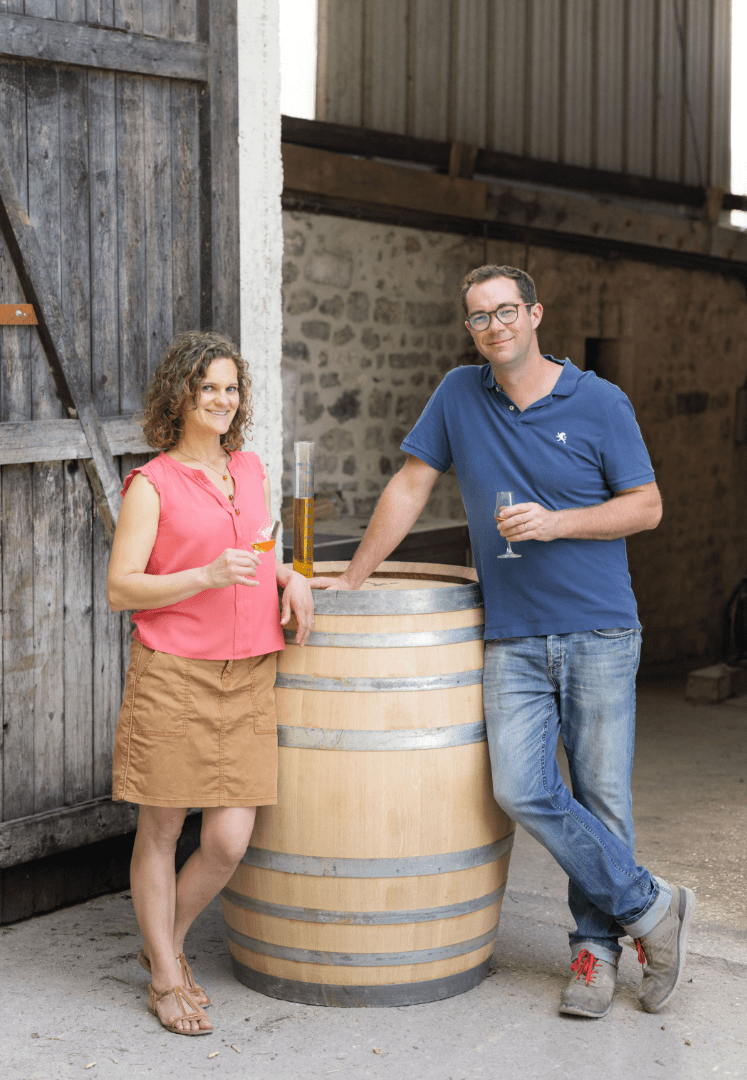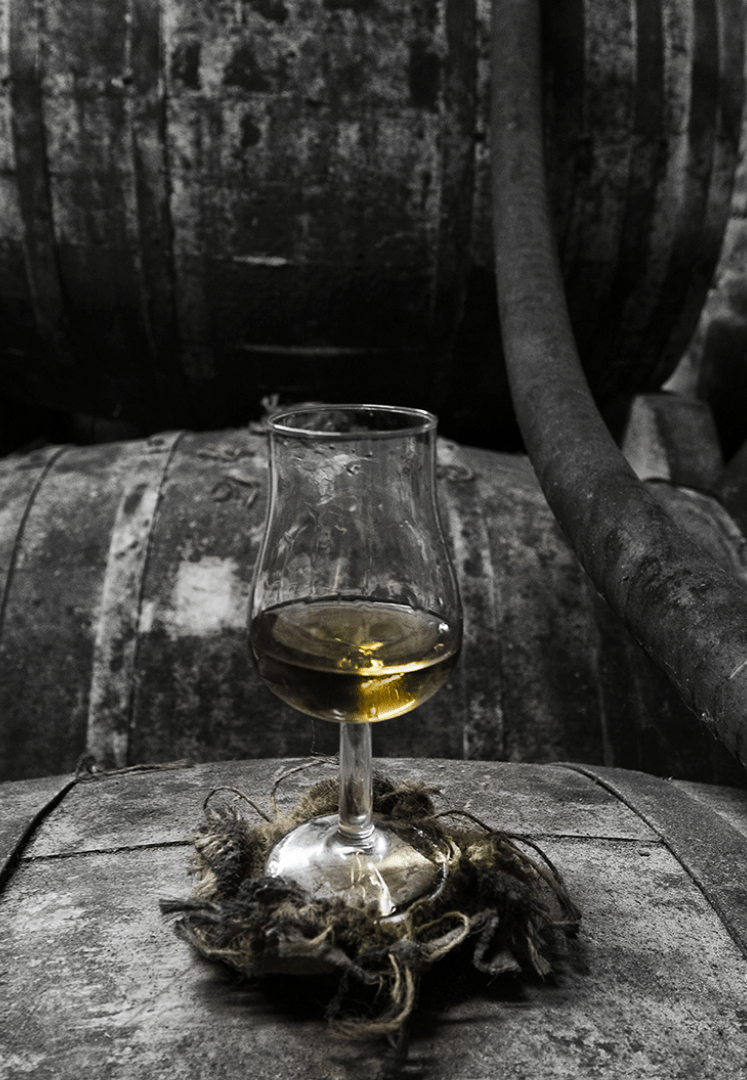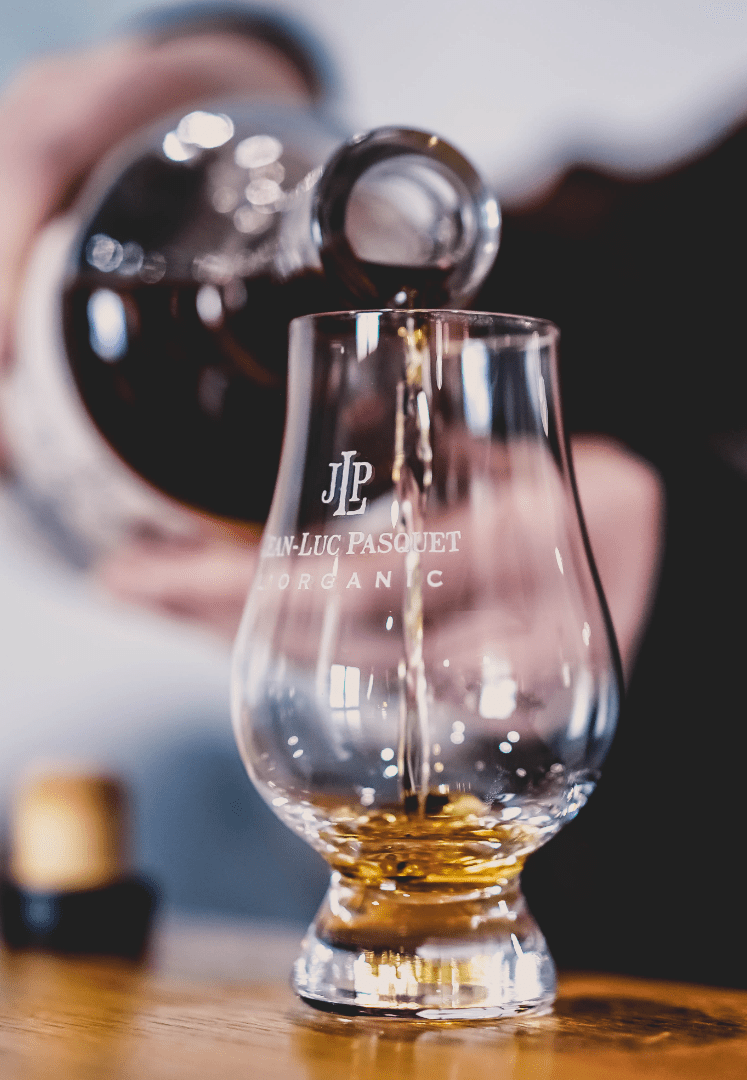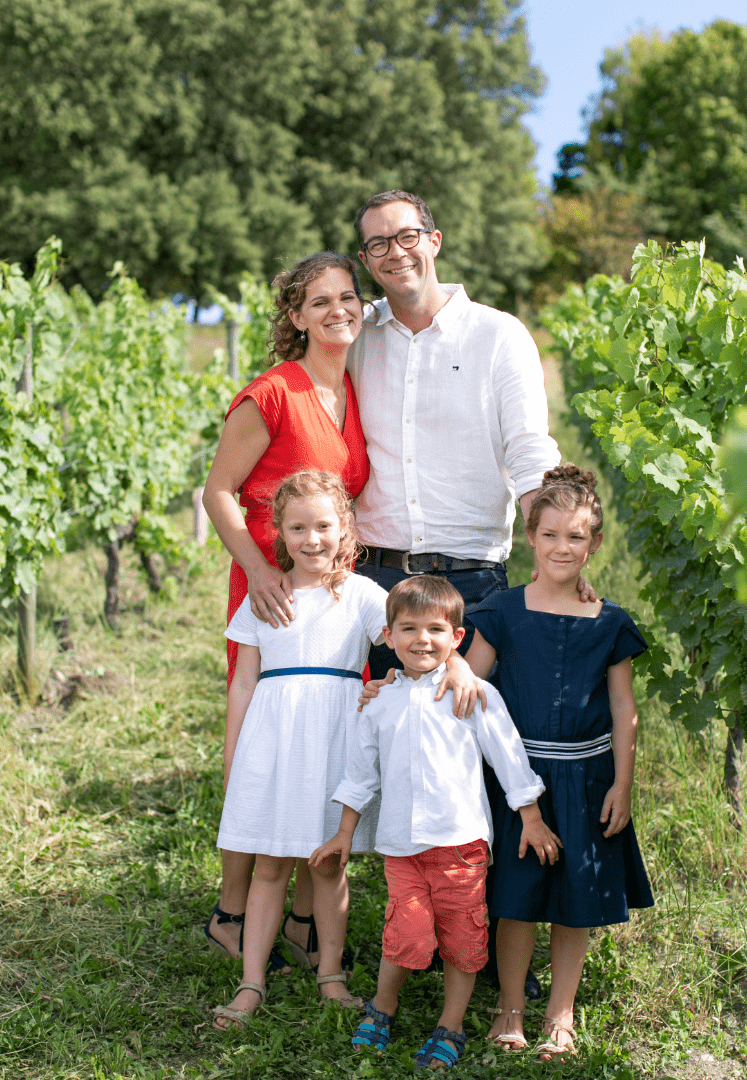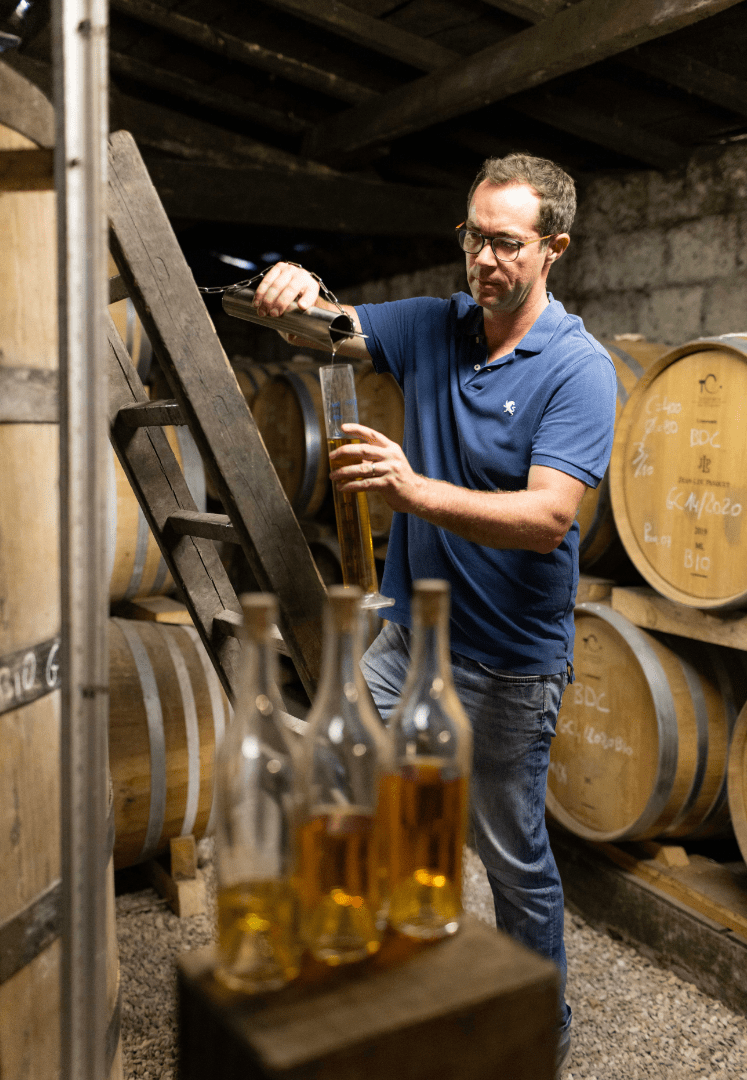A pied de cuve is made for each grape variety to preserve its varietal expression.
Each fermenting vat is checked once a day. We check that the temperature in the vat is between 18 and 26 degrees Celsius, and that fermentation activity is in line with its stage. Ideally, the process of transforming sugars into alcohol should not exceed 5-6 days. Each vat is tasted daily to assess its quality and anticipate any problems.
Once the tumult of fermentation is over, we make sure that the sugars have been completely transformed into alcohol. A maximum of 2% residual sugars may remain - these are the non-fermentable sugars.
Using the ebulliometer, we determine the exact alcoholic content of the wine in each vat. Now it's time to "ouillage" the tanks (fill them completely).
Now the wine is ready to be distilled.
